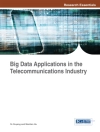The computer game industry is clearly growing in the direction of
multiplayer, online games. Understanding the demands of games on IP
(Internet Protocol) networks is essential for ISP (Internet Service
Provider) engineers to develop appropriate IP services.
Correspondingly, knowledge of the underlying network’s capabilities
is vital for game developers.
Networking and Online Games concisely draws together and
illustrates the overlapping and interacting technical concerns of
these sectors. The text explains the principles behind modern
multiplayer communication systems and the techniques underlying
contemporary networked games. The traffic patterns that modern
games impose on networks, and how network performance and service
level limitations impact on game designers and player experiences,
are covered in-depth, giving the reader the knowledge necessary to
develop better gaming products and network services. Examples of
real-world multiplayer online games illustrate the theory
throughout.
Networking and Online Games:
* Provides a comprehensive, cutting-edge guide to the development
and service provision needs of online, networked games.
* Contrasts the considerations of ISPs (e.g. predicting traffic
loads) with those of game developers (e.g. sources of lag/jitter),
clarifying coinciding requirements.
* Explains how different technologies such as cable, ADSL
(Asymmetric Digital Subscriber Line) and wireless, etc., affect
online game-play experience, and how different game styles impose
varying traffic dynamics and requirements on the network.
* Discusses future directions brought by emerging technologies
such as UMTS (Universal Mobile Telephone Service), GPRS (General
Packet Radio Service), Wireless LANs, IP service Quality, and
NAPT/NAT (Network Address Port Translation/Network Address
Translation)
* Illustrates the concepts using high-level examples of existing
multiplayer online games (such as Quake III Arena, Wolfenstein
Enemy Territory, and Half-Life 2).
Networking and Online Games will be an invaluable
resource for games developers, engineers and technicians at
Internet Service Providers, as well as advanced undergraduate and
graduate students in Electrical Engineering, Computer Science and
Multimedia Engineering.
multiplayer, online games. Understanding the demands of games on IP
(Internet Protocol) networks is essential for ISP (Internet Service
Provider) engineers to develop appropriate IP services.
Correspondingly, knowledge of the underlying network’s capabilities
is vital for game developers.
Networking and Online Games concisely draws together and
illustrates the overlapping and interacting technical concerns of
these sectors. The text explains the principles behind modern
multiplayer communication systems and the techniques underlying
contemporary networked games. The traffic patterns that modern
games impose on networks, and how network performance and service
level limitations impact on game designers and player experiences,
are covered in-depth, giving the reader the knowledge necessary to
develop better gaming products and network services. Examples of
real-world multiplayer online games illustrate the theory
throughout.
Networking and Online Games:
* Provides a comprehensive, cutting-edge guide to the development
and service provision needs of online, networked games.
* Contrasts the considerations of ISPs (e.g. predicting traffic
loads) with those of game developers (e.g. sources of lag/jitter),
clarifying coinciding requirements.
* Explains how different technologies such as cable, ADSL
(Asymmetric Digital Subscriber Line) and wireless, etc., affect
online game-play experience, and how different game styles impose
varying traffic dynamics and requirements on the network.
* Discusses future directions brought by emerging technologies
such as UMTS (Universal Mobile Telephone Service), GPRS (General
Packet Radio Service), Wireless LANs, IP service Quality, and
NAPT/NAT (Network Address Port Translation/Network Address
Translation)
* Illustrates the concepts using high-level examples of existing
multiplayer online games (such as Quake III Arena, Wolfenstein
Enemy Territory, and Half-Life 2).
Networking and Online Games will be an invaluable
resource for games developers, engineers and technicians at
Internet Service Providers, as well as advanced undergraduate and
graduate students in Electrical Engineering, Computer Science and
Multimedia Engineering.
Зміст
Author Biographies.Acknowledgements.
1 Introduction.
2 Early Online and Multiplayer Games.
2.1 Defining Networked and Multiplayer Games.
2.2 Early Multiplayer Games.
2.3 Multiplayer Network Games.
3 Recent Online and Multiplayer Games.
3.1 Communication Architectures.
3.2 The Evolution of Online Games.
3.3 Summary of Growth of Online Games.
3.4 The Evolution of Online Game Platforms.
3.5 Context of Computer Games.
4 Basic Internet Architecture.
4.1 IP Networks as seen from the Edge.
4.2 Connectivity and Routing.
4.3 Address Management.
5 Network Latency, Jitter and Loss.
5.1 The Relevance of Latency, Jitter and Loss.
5.2 Sources of Latency, Jitter and Loss in the Network.
5.3 Network Control of Lag, Jitter and Loss.
5.4 Measuring Network Conditions.
6 Latency Compensation Techniques.
6.1 The Need for Latency Compensation.
6.2 Prediction.
6.3 Time Manipulation.
6.4 Visual Tricks.
6.5 Latency Compensation and Cheating.
7 Playability versus Network Conditions and Cheats.
7.1 Measuring Player Tolerance for Network Disruptions.
7.2 Communication Models, Cheats and Cheat-Mitigation.
8 Broadband Access Networks.
8.1 What Broadband Access Networks are and why they Matter.
8.2 Access Network Protocols and Standards.
8.3 Cable Networks.
8.4 ADSL Networks.
8.5 Wireless LANs.
8.6 Cellular Networks.
8.7 Bluetooth Networks.
8.8 Conclusion.
9 Where Do Players Come from and When?
9.1 Measuring Your Own Game Traffic.
9.2 Hourly and Daily Game-play Trends.
9.3 Server-discovery (Probe Traffic) Trends.
9.4 Mapping Traffic to Player Locations.
10 Online Game Traffic Patterns.
10.1 Measuring Game Traffic with Timestamping Errors.
10.2 Sub-second Characteristics.
10.3 Sub-second Packet-size Distributions.
10.4 Sub-Second Inter-Packet Arrival Times.
10.5 Estimating the Consequences.
10.6 Simulating Game Traffic.
11 Future Directions.
11.1 Untethered.
11.2 Quality of Service.
11.3 New Architectures.
11.4 Cheaters Beware.
11.5 Augmented Reality.
11.6 Massively Multiplayer.
11.7 Pickup and Putdown.
11.8 Server Browsers.
12 Setting Up Online FPS Game Servers.
12.1 Considerations for an Online Game Server.
12.2 Wolfenstein Enemy Territory.
12.3 Half-Life 2.
12.4 Configuring Free BSD’s Linux-compatibility Mode.
13 Conclusion.
13.1 Networking Fundamentals.
13.2 Game Technologies and Development.
13.3 A Note Regarding Online Sources.
Index.
Про автора
Grenville Armitage Editor and contributing author GrenvilleArmitage is Director of the Centre for Advanced Internet
Architectures (CAIA) and Associate Professor of Telecommunications
Engineering at Swinburne University of Technology, Melbourne,
Australia. He received his Bachelor and Ph D degrees in Electronic
Engineering from the University of Melbourne, Australia in 1988 and
1994 respectively. He was a Senior Scientist in the Internetworking
Research Group at Bellcore in New Jersey, USA (1994 to 1997) before
moving to the High Speed Networks Research department at Bell Labs
Research (Lucent Technologies, NJ, USA). During the 1990s he was
involved in various Internet Engineering Task Force (IETF) working
groups relating to IP Quality of Service (Qo S). While looking for
applications that might truly require IP Qo S he became interested
in multiplayer networked games after moving to Bell Labs Research
Silicon Valley (Palo Alto, CA) in late 1999. Having lived in New
Jersey and California he is now back in Australia – enjoying
close proximity to family, and teaching students that data
networking research should be fascinating, disruptive and fun. His
parents deserve a lot of credit for helping his love of technology
become a rather enjoyable career.
Mark Claypool Contributing author Mark Claypool is an
Associate Professor in Computer Science at Worcester Polytechnic
Institute in Massachusetts, USA. He is also the Director of the
Interactive Media and Game Development major at WPI, a 4-year
degree in the principles of interactive applications and
computer-based game development. Dr. Claypool earned M.S. and Ph.D.
degrees in Computer Science from the University of Minnesota in
1993 and 1997, respectively. His primary research interests include
multimedia networking, congestion control, and network games. He
and his wife have 2 kids, too many cats and dogs, and a bunch of
computers and game consoles. He is into First Person Shooter games
and Real-Time Strategy games on PCs, Beat-’em Up games on
consoles, and Sports games on hand-helds.
Philip Branch Contributing author Philip Branch is Senior
Lecturer in Telecommunications Engineering within the Faculty of
Information and Communication Technologies at Swinburne University
of Technology. Before joining Swinburne he was a Development
Manager with Ericsson Asia Pacific Laboratories and before that, a
Research Fellow at Monash University where he conducted research
into multimedia over access networks. He was awarded his Ph D from
Monash University in 2000. He enjoys bushwalking with his young
family and playing very old computer games.
Придбайте цю електронну книгу та отримайте ще 1 БЕЗКОШТОВНО!
Мова Англійська ● Формат PDF ● Сторінки 232 ● ISBN 9780470030462 ● Розмір файлу 4.1 MB ● Видавець John Wiley & Sons ● Опубліковано 2006 ● Видання 1 ● Завантажувані 24 місяців ● Валюта EUR ● Посвідчення особи 2312534 ● Захист від копіювання Adobe DRM
Потрібен читач електронних книг, що підтримує DRM












